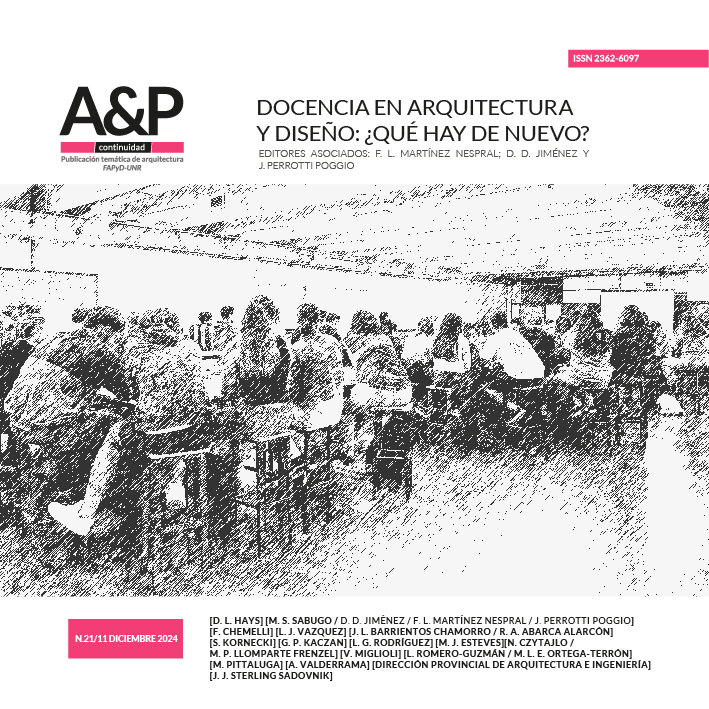Virtuality as a generator of cultural bridges
Creating bonds through mentoring as an academic experience
DOI:
https://doi.org/10.35305/23626097v11i21.483Keywords:
mentoring, guidance, technologyAbstract
Since the 2020-2021pandemic, our jobs as teachers have been affected and have radically changed. Technology was our most precious ally. It brought us closer to our students which, in turn, enabled the exchange of experiences with some colleagues all over the world. The difficulties and concerns we had in Argentina were the same ones of the schools of architecture in other countries. Because of this global exchange, we received a proposal to be mentors for the School of Architecture, Planning and Preservation of Maryland University, United States. In this article we want to expound our experience as Latin American teachers who accompany students from North America in their studies. We also seek both to describe how technology allows us to share different experiences and to recognize all the similarities and differences we have found between an American student and a student from the School of Architecture, Design and Urbanism of the National University of Buenos Aires where we work as teachers year after year.
Downloads
Metrics
References
Baricco, A. (2019). The Game. Barcelona, España: Anagrama
Feldman, D. (2020). Relaciones entre didáctica, enseñanza y escuela en tiempos de pandemia. Buenos Aires, Argentina: Studocu
Lave, J. y Wenger E. (1991). Situated learning: Legitimate peripheral participation. Cambridge, UK: Cambridge University Press
Lozano Cabezas I., Iglesias Martínez, M. (2014). Las oportunidades de las académicas en el desarrollo profesional docente universitario: Un estudio cualitativo. Madrid, España: Universidad Nacional de Educación a Distancia
Mazzeo, C. y Romano, A. (2007). La enseñanza de las disciplinas proyectuales. Hacia la construcción de una didáctica para la enseñanza superior. Buenos Aires, Argentina: Nobuko
Morin, E. (1988). El método. El conocimiento del conocimiento. Madrid, España: Cátedra
Salvatierra, F. (2008). Sociedad, Internet, Tecnología: Una introducción al tema. Buenos Aires, Argentina: Educared
Serres, M. (2014). Pulgarcita. Barcelona, España: Gedisa

Published
How to Cite
Issue
Section
License
Copyright (c) 2024 A&P Continuidad

This work is licensed under a Creative Commons Attribution-NonCommercial-ShareAlike 4.0 International License.
Open access policy
A&P Continuidad is a non-profit and open access publication. According to Mexico Declaration on Cultural Policies, the journal distribution is submitted to Creative Commons Attribution-Noncommercial-ShareAlike 4.0 International Public License (CC BY-NC-SA). “Neither the commercial use of the original work nor that of the possible derivative works are allowed. The distribution of derivative works should be submitted to the license regulating the original work. This license is not free.”
A&P Continuidad authorizes the partial or full reproduction of texts and graphs provided that the source is cited. Authors are exclusively responsible for the criteria expressed in the articles which do not necessarily reflect the opinion of the Editorial Committee or that of the Direction Board. The copyright of the published articles pertains to their authors or publishers.
Transfer of rights
The acceptance of an article to be published implies the author’s transfer of rights to the journal. Authors continue to have the right to use the material in future books or publications, approve or veto the republication of their works as well as the rights related to patents or other rights. Transfer of rights form may be downloaded here.























 This OJS site and its metadata are under a
This OJS site and its metadata are under a 

